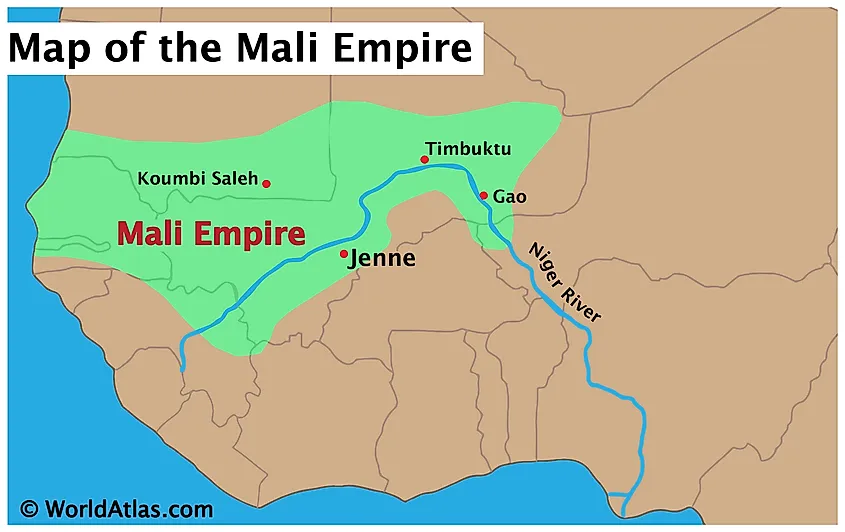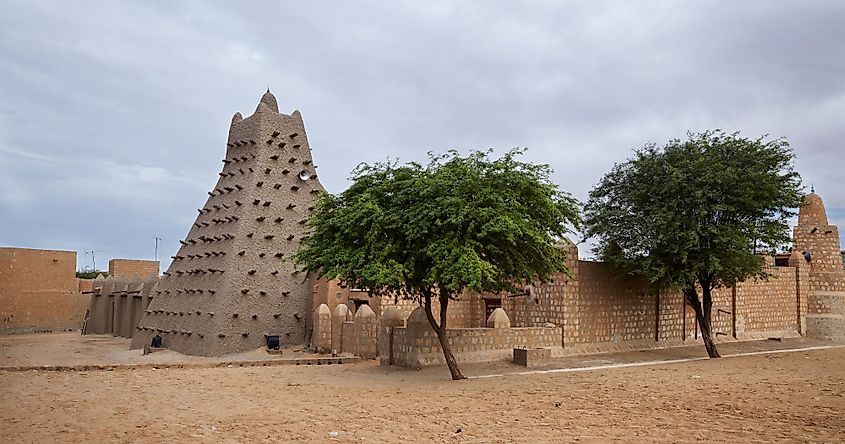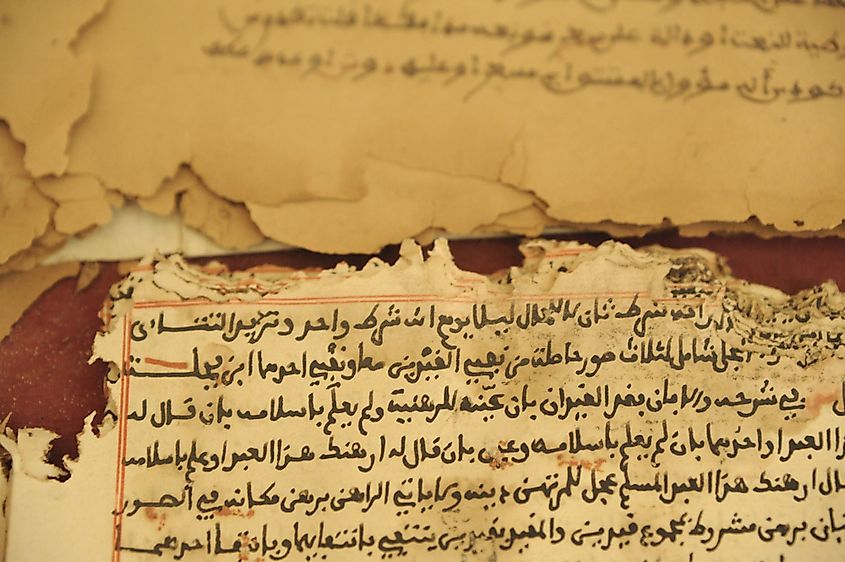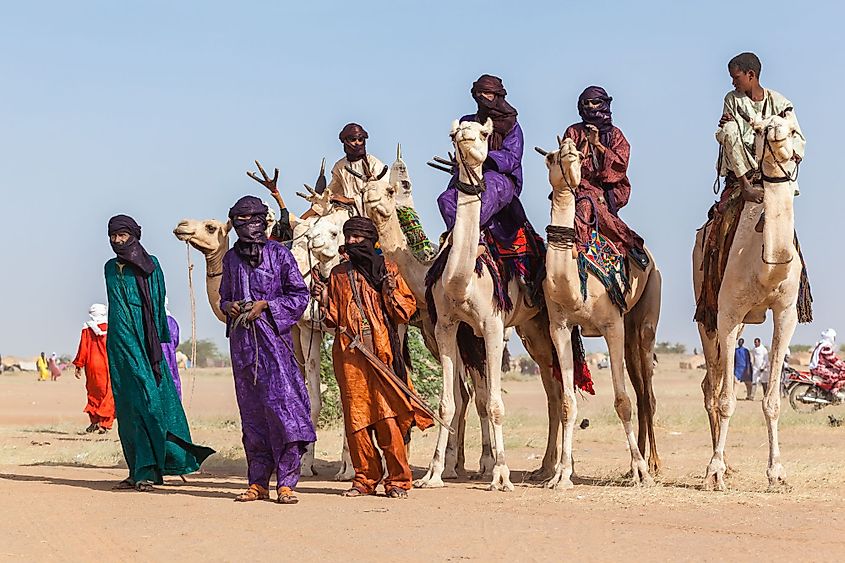
Mali Empire
The Mali Empire was a large empire in West Africa. It rose from the ashes of the Ghana Empire (not to be confused with the modern country of Ghana), and lasted for around 300 years, from the 13th century to the 16th century. At its height, it controlled a large swathe of West Africa, from the Atlantic Ocean to around the modern-day border between the countries of Mali and Niger. The empire grew rich from the vast amounts of gold within its territory, and from the extensive trade network that it had built. But after a long period of prosperity, the empire began to collapse as it overspent and overstretched itself. By the mid-16th century, it ceased to be an important political entity in West Africa.
Birth Of The Mali Empire
The Mali Empire came into being in the early 13th century, at a time when the Ghana Empire, which was founded in the 8th century, had collapsed. What was left of the empire were several independent fiefdoms. The leaders of these fiefdoms all competed to fill the power vacuum left by the Ghana Empire. One of these leaders was named Soumaoro (also called Sumanguru) Kanté, the ruler of the Susu Kingdom. Soumaoro managed to seize the former capital of the Ghana Empire, Kumbi Saleh, now located in present-day Mauritania. From there, he expanded his territory, enveloping kingdoms belonging to the Malinke people. According to historical sources, Soumaoro was a very cruel ruler, and the Malinke suffered under his control.
Chaffing at the oppressive rule of Soumaoro, a group of 12 small Malinke Kingdoms began a rebellion in 1234. The rebellion was led by Sondiata, the ruler of a neighboring kingdom, who was a Malinke himself, and was born on Malinke territory. He managed to cobble together a coalition of the small Malinke kingdoms to fight Soumaoro. In 1235, this coalition, supported by Sondiata’s own forces, defeated Soumaoro and took control of Kumbi Saleh. After the success of the rebellion, Sondiata was crowned the Mansa (emperor) of a new federation of the Malinke kingdoms. Thus, the Mali Empire was born.
The Mali Empire Expands

The Mali Empire owed its success largely to the abundant gold deposits within its territory and the taxes that the realm collected from its citizens and traders. At one point, the empire produced two thirds of the world’s supply of gold. Its economy was entirely sustained by demand for gold from the Islamic states and Christian Europe. Sondiata used this wealth to build a mighty army to guard the important trade routes. He selected his hometown of Niani to be the empire’s capital. It was a better location than the aforementioned Kumbi Saleh because it was further south, thus safer from Moroccan raiders. It was also better for agriculture.
Sundiata would rule the Mali Empire for about 25 years, dying in 1255. He would be succeeded by one of his adopted sons, Mansa Wali, who further expanded the borders of the empire. In addition, Sundiata’s successor also introduced Islam to the empire. He was the first ruler of the Mali Empire to make the Hajj pilgrimage to Mecca, Islam’s holiest city. This journey allowed him to strengthen ties with rulers in North Africa. When Mansa Wali died, a violent battle for succession took place, which would turn into a full-blown civil war. The empire, however, would survive. In fact, with the exception of the civil war, the Mali Empire owed its endurance largely due to its stable government structure, which was highly decentralized. This decentralization meant that the empire could function well even with bad Mansas and squabbles within the ruling family.
The Mali Empire At Its Height

Arguably, the Mali Empire reached the peak of its power during the reign of Mansa Musa, who is credited by historical sources as the empire’s most successful ruler. Mansa Musa ruled from 1302 to sometime in the 1330s. He managed to further expand the Mali Empire’s borders to include the trade cities of Timbuktu and Gao, now located in the north-central part of present-day Mali. Mansa Musa was also incredibly rich. So rich, in fact, that his wealth is inconceivable even by today’s standards. According to Arab explorer Ibn Battuta, who visited the Mali Empire in the mid-14th century, Mansa Musa was so rich that he could give handfuls of gold to passers-by without so much as an afterthought.

Under Mansa Musa’s rule, the Mali Empire reached its greatest expanse, at over 800,000 sq. km. It also became an important center of knowledge. Mansa Musa commissioned the construction of many of the most spectacular buildings in Timbuktu, which would become a center of Islamic scholarship. Towards the end of his rule, Mansa Musa built and funded the famous Sankara Madrassa, which would become both one of the greatest centers of learning in the Islamic world, and the greatest library in Africa. At one point, the library of the Sankara Madrassa held between 250,000 and 700,000 manuscripts.
In 1324, Mansa Musa embarked on a pilgrimage to Mecca. But it was not just an ordinary pilgrimage. It was journey in which Mansa Musa hoped to raise the prestige of the Mali Empire, and put it on equal footing with other Islamic kingdoms. Thus, Mansa Musa undertook the most extravagant pilgrimage to Mecca in history. He took with him a caravan that may have included over 60,000 people, along with a massive amount of gold and other riches. According to some accounts, it took a full day for Mansa Musa’s caravan to pass by. This journey, however, was a costly one. Along the way, Mansa Musa would give handfuls of gold to poor beggars and passers-by. It is even alleged that on his journey, he had a new mosque built every Friday. Mansa Musa also spent immensely at local bazaars, buying merchandise at incredibly inflated prices. During his pilgrimage, the emperor of the Mali Empire flooded the market with so much gold that the price of the valuable metal crashed. He ultimately had to borrow money to finance his trip home.
Decline And Fall Of The Mali Empire

After Mansa Musa’s death, the Mali Empire began a slow decline. Mansa Musa’s son, Mansa Maghan, ascended the throne after the death of his father. Like his father, he spent a lot. So much so, in fact that he nearly bankrupted the empire. After only four years, however, he died, and was succeeded by his brother, Mansa Suleiman, who managed to clean up the mess made by Maghan. But following the end of Suleiman’s reign, the Mali Empire had a series of bad rulers. In 1388, the last ruler directly descended from Mansa Musa was killed, ending his line of succession. By the beginning of the 15th century, the Mali Empire began to lose much of its territory. The city of Gao rebelled against the empire around the year 1400. In 1431, a Berber ethnic group known as the Tuareg seized control of Walata and Timbuktu. The tributary kingdoms of the Mali Empire also began rebelling, eventually freeing themselves from imperial rule. By the mid-15th century, most of the empire’s territory had been conquered by a new empire, the Songhai Empire. From this point on, the Mali Empire ceased to exist. What remained were just the core homelands of the Malinke people, which would be divided into separate chiefdoms by the early 17th century.











